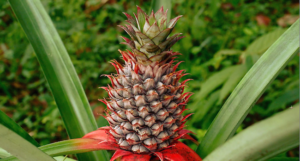By Kristy Nguyen and Abigail Montgomery; Farnsley Middle School (Louisville, KY)

Teacher: Marsha Buerger
Most people can agree that outdoor air pollution is a major concern. It can affect your health and make it harder to breathe. However, what most people don’t know is that indoor air pollution can be worse than outdoor air pollution.
According to the U.S Environmental Protection Agency (EPA), “Indoor air pollution is 2-to-5 times worse than outdoor air pollution.”
The World Health Organization (WHO) agrees, reporting that “almost 3% of the global burden of disease is due to indoor air pollution.”
According to the EPA, “In the last several years, a growing body of science evidence indicated that the air within homes and other buildings can be more seriously polluted than the outdoor air.”
Also according to the EPA, sources of indoor air pollution include gases such as radon and carbon monoxide. Radon comes from the natural breakdown of uranium in soil, rock, and water. Carbon monoxide is an odorless and colorless gas that can be produced by cigarette smoke or when fossil fuels are burned. Many household products like detergents, paints, and stain removers release chemicals called Volatile Organic Compounds (VOCs) that may be harmful to human health and can also cause indoor air pollution to become worse.
According to the National Institute of Environmental Health Sciences (NIEHS), exposure to VOCs can cause modest reductions in lung function, which affects people with asthma and emphysema.
According to the EPA, VOCs are chemicals that have a high vapor pressure at ordinary room temperature and are known to cause indoor air pollution. They have a low boiling point, which can cause a lot of molecules to evaporate or sublimate, which means to change directly into vapor when heated. This typically causes the VOC to change from a solid or liquid form to the surrounding air, a trait known as volatility. An example of a VOC is formaldehyde, which evaporates from paint and has a boiling point of -19 ºC. They also state that “Inhaling large amounts of VOCs can cause sick building syndrome which can reduce productivity, create dizziness, and worsen asthma and allergies.”
Plants however, can help to reduce indoor air pollution. A study done by Vadoud Niri, Ph.D., an analytical chemist at the State University of New York, in 2016, and presented at the American Chemical Society, shows that Bromeliads have the best results for removing VOCS from the air.
The Bromeliad is a type of plant that grows in the tropics and is a part of the Bromeliaceae family.
The study was conducted using five common house plants—Caribbean tree cactus, Dracaena, Jade plant, Spider plant, and a Bromeliad—and measuring eight different VOCS. All the experiments included the VOCs acetone, benzene, and formaldehyde.
According to the CDC, acetone can cause dizziness, allergic reactions, and even asthma when inhaled. Benzene can be harmful to the reproductive organs, and formaldehyde can cause asthma-like symptoms to children when exposed.
The Bromeliad absorbed six out of the eight VOCs, and preformed the best and the fastest compared to other household plants. The Bromeliad could absorb over 80% of 6 VOCs.
In a survey of 7th grade students at Farnsley Middle School, 98 out of 100 students said that they didn’t know the difference between indoor and outdoor air pollution, or that indoor air pollution can affect people with asthma and emphysema more than normal people.

This work is licensed under a Creative Commons Attribution-NonCommercial-NoDerivs 3.0 Unported License













